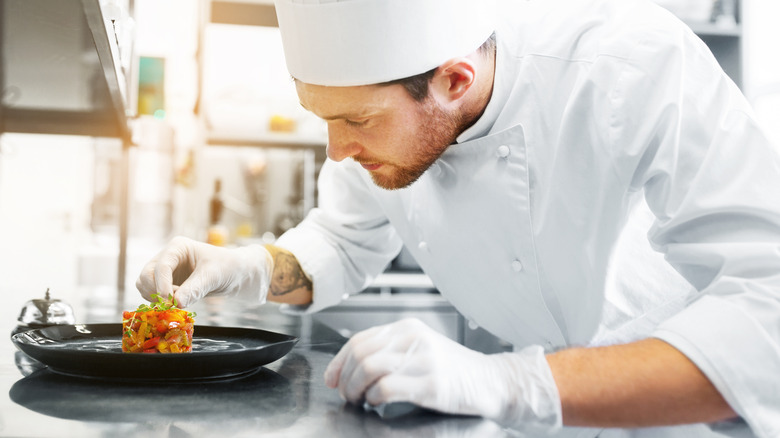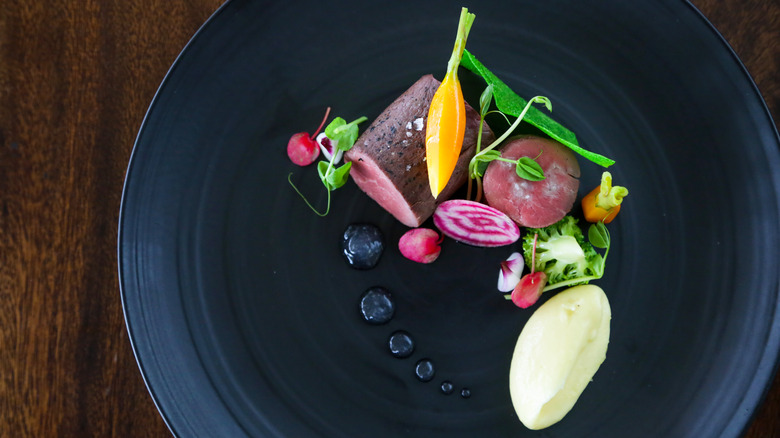The French Culinary Movement That Changed The Way Americans Eat
French cooking has long been considered one of the most prestigious and skillful world cuisines. Francophile and U.S. president Thomas Jefferson, for instance, was particularly enamored with French food after his stay there, per The White House Historical Association.
But French cooking as we know it has evolved since chef Francois Pierre La Varenne published "Le Cuisinier Francois" in the 1600s. French culinary tradition started spreading around the time of the French Revolution as cooks in other countries began studying French cookbooks. But what we probably associate most with French food is haute cuisine, with opulent dining rooms, fussy plating, and Michelin stars. It evolved from "an emphasis on abundance and quantity to an emphasis on moderation and quality."
Chef Marie-Antoine Carême promoted these ideals and emphasized the idea that French cooking was a technical, precise art form, notes the Escoffier School of Culinary Arts. Haute cuisine continued to evolve into la nouvelle cuisine, which is likely more familiar to us.
New American cuisine is having a moment
La nouvelle cuisine emphasizes "the use of high-quality, fresh ingredients, lighter meals, and simpler yet breathtaking presentations," explains the Escoffier School of Culinary Arts. It also changed the way we eat at restaurants; chefs delicately plate their dishes and send them out, versus wait staff plating at your table. American food doesn't have a reputation for being light or fresh, but the movement has made an impact on American chefs nonetheless.
When la nouvelle cuisine reached American shores, it sparked something of a revolution with chefs who weren't taught in la grande cuisine fashion. The movement inspired chefs such as Alice Waters to experiment with la nouvelle techniques. With its emphasis on fresh ingredients and lightness, American chefs applied regional ideas and tastes to la nouvelle cuisine ideals (per Britannica). What we ended up with is the New American cuisine, distinctly American through its use of regional and cultural influences.
The ideals of New American cuisine continue to evolve, with The Wall Street Journal calling the evolution "an organic outgrowth of demographic shifts, democratic kitchens, and the never-ending pursuit of flavor."

